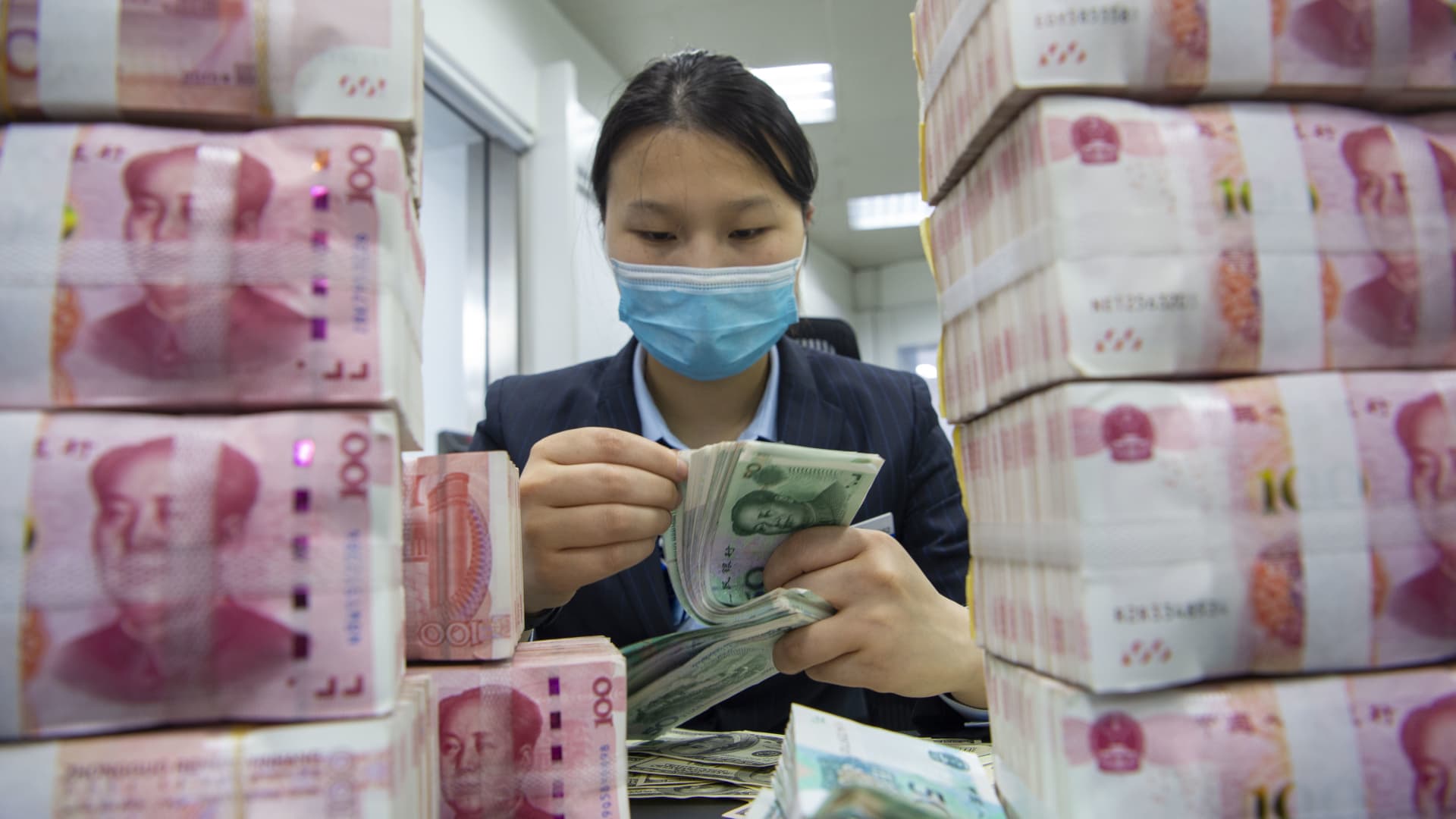
William Rhodes and Stuart Mackintosh have identified four distinct but overlapping economic risks for China.
Future Publishing | Future Publishing | Getty Images
The following commentary is co-authored by William R. Rhodes, CEO of William R. Rhodes Global Advisors, former chairman and CEO of Citibank, and author of “Banker to the World: Leadership Lessons from the Front Lines of Global Finance“; and by Stuart Mackintosh, executive director of nonprofit the Group of Thirty.
We should all care what happens in China, because it will affect us all.
Economic dangers and Chinese President Xi Jinping’s responses to them will affect China first and foremost — but trouble in China could become trouble everywhere this year and next.
The world is rightly focused on the atrocities being committed by Russia in Ukraine, and China’s choice to stand with Russia is straining globalization’s links.
But China’s economic challenges go beyond the war. Threats to China’s outlook are rising in four distinct but overlapping areas: at home, in health, in debt, and in a fracturing globe.
Real estate
China’s leaders must ask whether their political support for a declining, weak, and unpredictable Russia is worth more to China than an interlinked world in which all competitors agree to general rules and norms.
A stumble in real estate bodes ill for the economy as a whole. Economists have demonstrated that most recessions are either equity- or housing bust-related. Once home prices shake, and start falling, we know the effect of debt on declines in home prices: the former amplifies the latter and can cause a collapse in wider consumption. Underwater homeowners stop spending as their house prices fall.
China is not at that dangerous juncture yet. But the signs are ominous. We would be naive to think that normal economic boom-bust rules never apply in China, or to assume that Chinese authorities can always effectively control prices across the entire country indefinitely. Yet we have to hope they can manage housing better that the West did in 2007-2008.
‘Zero-Covid’
As China’s housing markets shake, the effects of the pandemic policy are making economic matters worse.
China’s zero-Covid policy, by far the toughest medical and public health response to the pandemic anywhere, is in trouble. China’s rigid stance toward prevention paid huge dividends — the country continued to operate largely free of the virus in 2020 and 2021.
Today however, as the virus mutates and spreads rapidly, those measures may be more costly. An uptick in cases in Shanghai to about 20,000 a day last week caused the city to shut down, triggering citizens’ anger and the quarantining of 26 million residents. Shanghai alone contributes 4 percent of China’s GDP and is its largest port.
Lockdowns are being seen in cities across China. The negative economic effects of its hard-to-sustain Covid policy will become visible in the months ahead. Already economists are cutting growth forecasts for China.
If demand in China weakens, everyone outside China may feel it too. It’s unclear whether the central government is willing or able to pivot from zero tolerance to a new approach — even though such a shift appears increasingly necessary to outsiders.
Risky external loans
Interest rates are rising as the developed world tries to contain inflation. Many loans made by Chinese entities as part of Beijing’s Belt and Road Initiative are not only straining balance sheets in low-income countries across the globe, but they’ll also burden China’s banks with nonperforming loans. That in turn will impact the economic performance of those banks, which are key conduits for Chinese domestic investment, businesses and the economy.
Belt and Road has saddled developing states with at least $385 billion in debts, according to a 2021 report from AidData, an international development research lab based at the College of William and Mary in Virginia.
There, China faces three negative dynamics: debt defaults, non-performing loans on the books of its largest banks and state lenders, and collateral damage to diplomatic and geopolitical interests if it seizes nations’ assets as part of sometimes onerous loan terms.
In 2022, China’s leadership will learn that not all lending is smart policy. Even if the contract appears beneficial at first glance, China needs solvent borrowers and happy customers and allies, not bilateral sleight of hand, defaults, and angry citizens.
Russia’s invasion of Ukraine
Globalization — the engine that powers China’s economic engine — risks stalling under the pressure of the pandemic and Russia’s war with Ukraine. Supply chains are stretched and broken, or else being reconstituted with new routes and links.
China’s leaders must ask whether their political support for a declining, weak, and unpredictable Russia is worth more to China than an interlinked world in which all competitors agree to general rules and norms. Everyone benefits from such a global architecture.
Choosing Russia over the globalization in which their country is so deeply embedded is a shortsighted, damaging economic bargain, one which could result in secondary sanctions on Chinese firms, as the U.S. has warned.
Russia may continue the war, diminished, shrunken, fueled by her oil and gas, but ostracized by most countries in the world. China too may pay a heavy price if it continues to back Russia at the expense of engagement with the trading system the country relies on for economic growth.
All those tough challenges suggest that the Chinese government’s official forecast of 5.5 percent growth rate in 2022 is too optimistic. Indeed, it now seems more likely than not that China will grow at below 5 percent in 2022 – a rate not seen since the crisis of 1989 in Tiananmen Square.
Such an economic outcome would be bad news for China, and bad news for the rest of the globe, even as we sometimes distrust one another.
Let us hope the right choices are made — choices that are globally framed rather than narrowly constructed.




